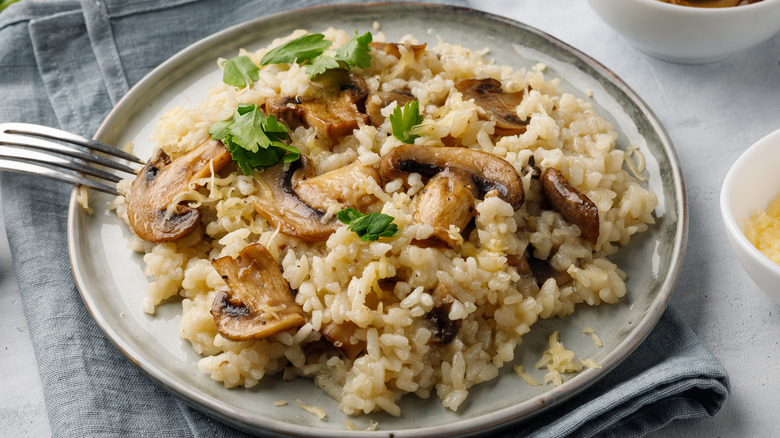The Ingredient You Should Never Skip When Making Risotto
Mastering the art of risotto is something that should be on every food lover's list. This creamy and endlessly adaptable staple of northern Italy is actually very simple to make, though there is a tendency to believe the preparation is overly fussy. While risotto can be very forgiving, there are certain rules you should follow in order to get the best results and not skipping the alcohol is one of them.
Wine, apart from being hugely important to the culinary and social culture of Italy, is a vital part of any good risotto. However, any booze you have that fits the flavors of your recipe will work just fine. Naturally, if you are alcohol averse, there are ways around this such as using vinegar or other acidic liquids. But if you're a stickler for tradition, and you want to make as close to the real deal (i.e. what you get in Italy) as possible, you need to be adding some kind of booze to your risotto.
When it comes to choosing your alcohol, you can stick with traditional red, white, or rosé wines, or you could go down a different path. Substitutions like dry sherry, gin, or vodka could work for this stage. But whatever type of alcohol you use, you need to be aware of the flavor it will impart and its importance to the overall process of making risotto.
The importance of sfumato
The specific step that requires the addition of alcohol to risotto is called: lo sfumato. The word, "sfumato", means to steam or smoke in Italian, which is what occurs when you add alcohol to the pan. The placement of this step is important, as it occurs between toasting the rice and the actual transformation of the risotto when broth is added.
The rice toasts as it hits the flavor base of the risotto, which is typically a small soffritto of onions and garlic. The rice then absorbs the moisture from the soffritto, leaving you with a dry pan. This usually takes between three to five minutes depending on how much rice you have and how high the heat is. Once the rice is finished toasting, the wine or other liquor goes in.
Not only will the alcohol deglaze the pan, lifting anything that's stuck to the bottom, but it will also be absorbed into the rice as it cooks. Therefore, the addition of alcohol adds an extra layer of flavor to your dish. So, why exactly would you want to skip this step? You don't. That's what we're saying. It brings even more flavor to your risotto for very little effort on your part. It may seem fussy, but why miss the opportunity?

